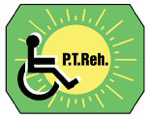


|
Current issue
Archive
Manuscripts accepted
About the journal
Editorial board
Reviewers
Abstracting and indexing
Contact
Instructions for authors
Publication charge
Ethical standards and procedures
Editorial System
Submit your Manuscript
|
3/2023
vol. 37 abstract:
Original article
Relationship between 3-Meter Backward Walk Test and grip strength in community-dwelling older adults
Chidozie Mbada
1
,
Apeji Ozaveshe
2
,
Adekola Ademoyegun
3
,
Faatihah Niyi-Odumosu
4
,
Micheal Akande
2
,
Tadesse Gebrye
1
,
Joel Faronbi
5
,
Francis Fatoye
1
Advances in Rehabilitation, 2023, 37(3), 52–59
Online publish date: 2023/09/28
View
full text
Get citation
ENW EndNote
BIB JabRef, Mendeley
RIS Papers, Reference Manager, RefWorks, Zotero
AMA
APA
Chicago
Harvard
MLA
Vancouver
Introduction
The 3-Meter Backward Walk Test (3-MBWT) is an important assessment tool used in evaluating neuromuscular control, proprioception, risk of falls and balance. On the other hand, the Hand Grip Strength (HGS) test primarily is used to measure muscular strength or maximum tension generated by one’s forearm muscles. This study aimed to assess the relationship between 3-MBWT and HGS among community-dwelling older adults. Material and methods Sixty-two community-dwelling older adults participated in this study. 3- MBWT was measured using a standardized procedure. HGS was measured in line with the guidelines of the American Society of Hand Therapists. Anthropometric variables were assessed following standard procedures. Pearson’s correlation coefficient was used to verify the correlation between 3-MBWT and HGS and the influence of socio-demographic factors on both 3-MBWT and HGS. Results The mean age was 68 ± 2 years. The mean values for 3-MBWT and HGS were 3.45 ± 0.80s and 29.58 ± 15.53kg. There was a significant correlation between 3-MBWT and HGS (r = -0.39; p = 0.002). However, there was no significant correlation between 3-MBWT and sociodemographics (p > 0.05). Similarly, there was no significant correlation between HGS and sociodemographics (p>0.05), except height (r=0.51, p<0.001). Conclusions The 3-MBWT and HGS were significantly correlated with one another. Anthropometric characteristics did not influence the 3-MBWT. On the other hand, only height and gender showed a significant influence on HGS. Therefore, both 3-MBWT and HGS may serve as useful functional outcome measures for fall predictability and frailty in older adults. keywords:
Ageing, Walking, Muscle strength, Frailty, Outcome measure |
    |